7 Major Ports Of Croatia
Croatia is positioned in central and southeastern Europe. Its entire coastline is on the Adriatic Sea and shares its maritime boundary with Italy. Other nations surrounding it are Slovenia, Hungary, Serbia, Bosnia & Herzegovina and Montenegro.
Croatia is a highly developed country with a strong economy resting on tourism, a major contributor to the GDP. The nation invests heavily in infrastructure and green energy, particularly solar, wind and geothermal energy. It also has its automobile industry.
Given its diverse topography, with several lakes, hills and plains, Croatia is a paradise for many with its warm and continental-type climate.
Croatia’s shipping sector is growing rapidly. It has six international ports and harbours: Rijeka, Zadar, Šibenik, Split, Ploče and Dubrovnik.
Let us look at the 7 major ports of Croatia.
1. Port of Rijeka
The Port of Rijeka lies on the coast of Kvarner Gulf in the Adriatic Sea. It is the principal port of Croatia, which handled 6,305,036 tonnes of cargo in 2022.
General cargo volume increased by 9% in 2022 to 719,094 tonnes, while bulk cargo volume also went up by 4%.
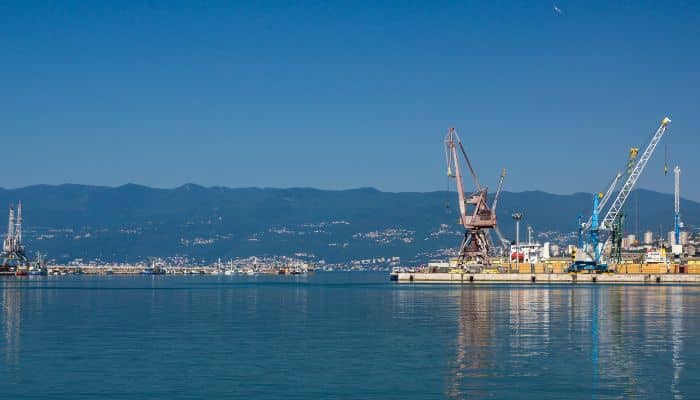
Historical records dating back to 1281 mention about this port. It also served as the main port of the Kingdom of Hungary in the 19th century.
The largest and busiest port of Croatia is also its commercial, cultural and industrial centre. It is also a naval base connected via railways to Zagreb, Trieste and Ljubljana. It has several shipyards, engine works and oil refineries.
The port has 39 berths handling containers, ores, wheat, lumber, crude, phosphate and refined petroleum products.
The Adriatic Gate Container terminal handles containers with its state-of-the-art equipment. It covers 17 hectares and comprises a wharf with two berths totalling 630 m. It is also directly linked to the motorway leading to Zagreb.
To boost port capacity, another deep-sea container terminal is being constructed to accommodate container ships of all sizes. The Zagreb Pier Deep Sea Container Terminal will be 680 m long, 300 m wide and 20 m deep.
Bakar is a subsidiary port of Rijeka. It has three terminals: the Bakar Port Bulk Terminal, the Tanker Terminal and the LPG facility.
2. Port of Ploce
Ploce is a natural port on the eastern coast of the Adriatic Sea at the Neretva River mouth and around 70 km northwest of Dubrovnik on the Dalmatian coast. The commercial harbour is situated on the eastern side.
The second largest port in the country, it is the main gate of the Pan-European Corridor Vc. It has a 5.5 million tonnes capacity for general cargo, container cargo, and dry and liquid bulk.
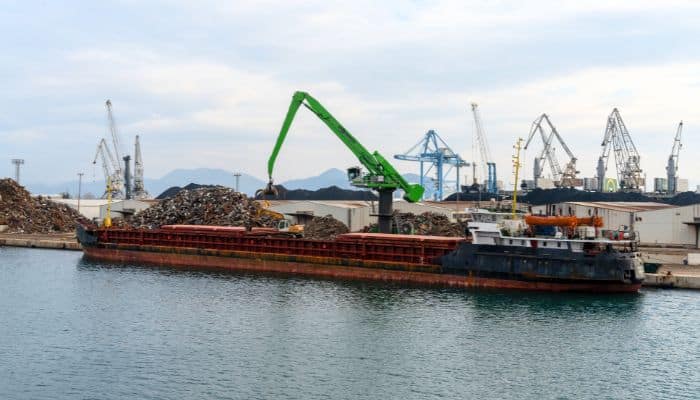
The port is still under construction and covers 170 hectares. Once completed, it will span 230 hectares.
Ploce handled 3.19 million tonnes in 2017 and is well-connected to the road and railway networks linking the Adriatic, Mediterranean and Central Europe.
The port’s general cargo terminal handles food, cotton, tobacco, and industrial products on its six berths. Iron, cinder, pig and crap iron are dealt with at the Bulk terminal. There is also an Alumina and Petroleum coke terminal with a 20,000-tonne capacity—the wood terminal handles, processes and stores timber.
The new liquid cargo terminal is in its 2nd construction phase while the bulk cargo terminal is being expanded. An entrance terminal with buildings, parking spaces and a control station is also being constructed.
3. Port of Zadar
The Port of Zadar is situated on a peninsula on the northern portion of the Adriatic Coast. It comprises two areas: the old port with 969 m of berthage and ten moorings, used by coastal and passenger ships, and the New Gazenica port with four piers.
The latter is a deepwater harbour dealing with dry and liquid cargo. Major imports include grain, machinery, soya beans., chemicals, fuel and timber.
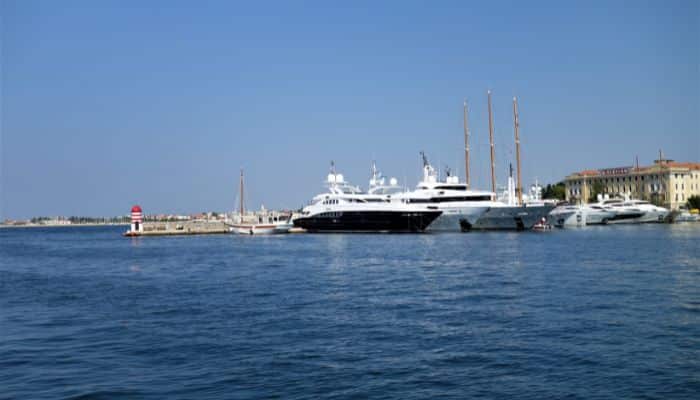
The port’s bulk terminal is mainly used for handling soya and grains. It has an elevator with a 150-ton capacity and a storage capacity of 8000 million tonnes.
The tanker berth is 200 m long and handles crude oil chemicals, liquid fuels, vegetable oils, etc. The terminal has six connections with a 150-750 t.p.h discharging rate.
Repair facilities for vessels are available at a shipyard called Nauta Lamjana at Kalti Ugljan Island opposite Zadar.
The port of Zadar has an annual turnover of around 2.7 million people, 430,000 vehicles, and over 300,000 tonnes of freight.
Gazenica is a sub-port of the Zadar port, three miles southeast of the city centre along the Adriatic Sea coast. It is linked by the D424 Highway.
The port has six berths handling different types of cargo. The first berth is for liquid cargo, the second deals with oil, the third accommodates dry bulk, the fourth is for fruit transhipments, the fifth and sixth are for general cargo and RORO.
The Passenger Port of Gazenica was opened in 2015 as the Zadar Passenger Terminal reached its capacity.
4. Port of Split
Split is a historic port city founded by Greek settlers in the central Dalmatian city of Split in Croatia. It was then taken over by the Romans, who established it as a key trading port in the region.
It grew in the Middle Ages and declined in the 18th and 19th centuries when Rijeka developed as the main trading point. It was also because the Ottoman Empire was weakening, which served as the market for the port of Split.
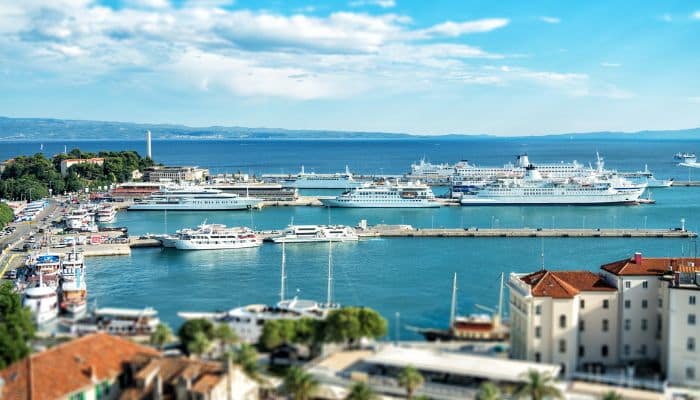
Today, it is the biggest passenger port in the country and also the largest passenger facility in the Adriatic, visited by around 5 million people.
The commercial port handles cement, petroleum, metals, grain and other goods on its 28 berths, which can accommodate 250 m long ships with a 7.9 m draught at max.
However, nowadays, annual passenger traffic at the port sometimes goes over 5 million annually. Also, the cargo volumes being handled are steadily increasing. Hence, the authorities are expanding the port, particularly the passenger port.
5. Port of Dubrovnik
Port of Dubrovnik lies in the southernmost part of Croatia, around 220 km from Split. Its main commercial port is formed by Luka Gruz and Rijeka Dubrovacka.
The port is well-sheltered from winds and waves and has facilities to accommodate all kinds of vessels. The port has good anchorage outside the harbour for ships awaiting berths.
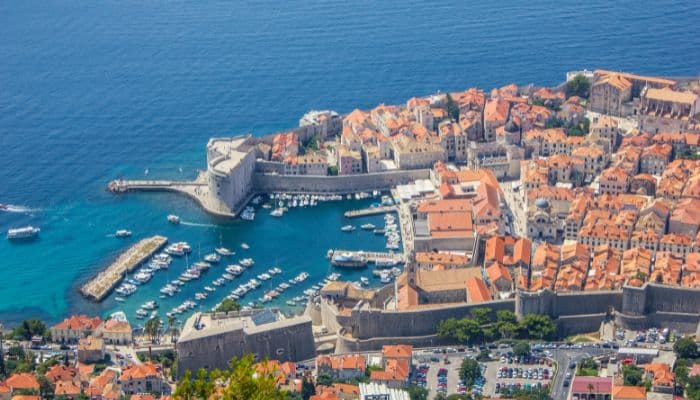
Containers are handled at berth 10, which is 186 m long and has a maximum draft of 10.2 m. The 100 m long RORO berth can accommodate ships up to 12 m draft.
The main cargoes handled here are minerals, containers, cement, timber and vehicles.
The passenger port is located in the neighbourhood of Gruz, 3 km northwest of the old town. It is the point of departure of all ferries and catamarans linking Dubrovnik with other Croatian ports and the Italian port of Bari. Also, besides Italy, Dubrovnik does not have ferry connections to any other nearby country.
6. Port of Sibenik
Sibenik is one of the oldest and best-protected harbours on Croatia’s Adriatic coast. It lies at the submerged mouth of river Krka, which forms a natural reserve. Approximately 350 ships, 740,000 tonnes of cargo and 550,000 passengers frequent the port yearly.
The 2700 m long and 300 m wide Anthony Channel is one of the entrances to the port, allowing unimpeded navigation for vessels up to 50,000 DWT. The harbour is 10 km long and 400-1200 m wide with 8 to 40 m depth.
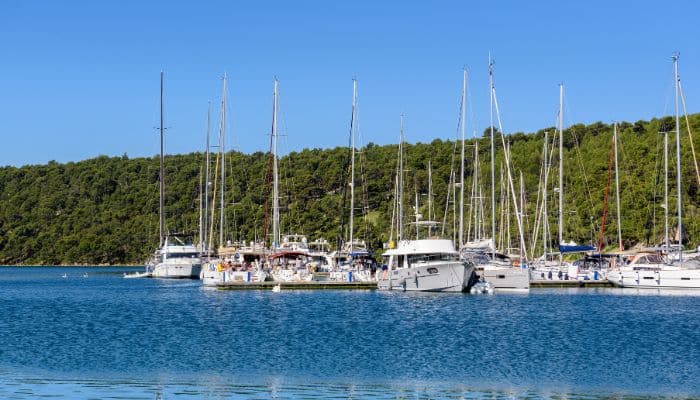
The commercial harbour deals primarily with bulk and general cargo and RORO. There is a passenger port, too, and anchorage facilities are available at Prvic Island.
Imports like phosphates and potash are dealt with at berths 21 and 11, with a capacity of 1,000,000 annually.
Exports of bulk ores, timber, clay and fertiliser are loaded at the Rogac Quay with an annual capacity of 400,000 tonnes.
7. Port of Vukovar
Vukvar is Croatia’s biggest river port, 1.2 km west of the Serbian border. It rests where the two rivers, Vika and Danube, meet. The local economy depends on agriculture, wine-growing, livestock, manufacturing and tourism.
Vukovar port on the downstream flow of the Danube River is 850 m long and 45 m wide. It is an important facility for inland trade and transport.
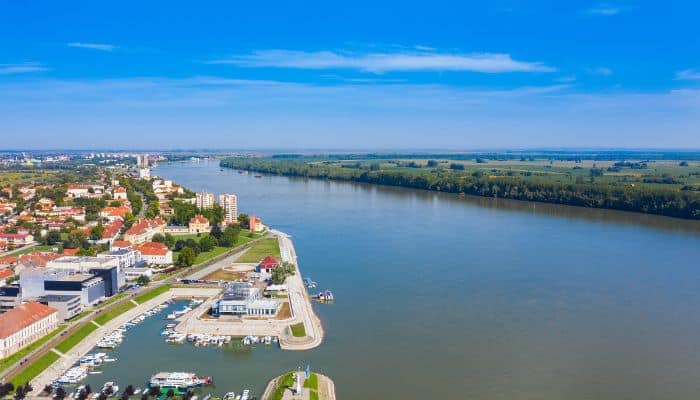
Since it lies amidst the river’s main current, it remains navigable the entire year, irrespective of the water level. So, even if the water level decreases, the port remains operational.
This river port has a terminal for handling bulk cargo, cereals, mineral fertilisers, and oil seeds. It transships around 100,000 tonnes of goods, mostly bagged items like sugar, oilseed and fertilisers.
Apart from Croatia, it handles cargo from neighbouring Bosnia and Herzegovina.
You might also like to read-
- 10 Major Ports On The Great Lakes
- 10 Biggest River Ports In The World
- What Ships Sailed With The Mayflower?
- 10 Largest Natural Ports
- 10 Major Ports In Canada
Disclaimer :
The information contained in this website is for general information purposes only. While we endeavour to keep the information up to date and correct, we make no representations or warranties of any kind, express or implied, about the completeness, accuracy, reliability, suitability or availability with respect to the website or the information, products, services, or related graphics contained on the website for any purpose. Any reliance you place on such information is therefore strictly at your own risk.
In no event will we be liable for any loss or damage including without limitation, indirect or consequential loss or damage, or any loss or damage whatsoever arising from loss of data or profits arising out of, or in connection with, the use of this website.
Do you have info to share with us ? Suggest a correction
Disclaimer :
The information contained in this website is for general information purposes only. While we endeavour to keep the information up to date and correct, we make no representations or warranties of any kind, express or implied, about the completeness, accuracy, reliability, suitability or availability with respect to the website or the information, products, services, or related graphics contained on the website for any purpose. Any reliance you place on such information is therefore strictly at your own risk.
In no event will we be liable for any loss or damage including without limitation, indirect or consequential loss or damage, or any loss or damage whatsoever arising from loss of data or profits arising out of, or in connection with, the use of this website.

About Author
Zahra is an alumna of Miranda House, University of Delhi. She is an avid writer, possessing immaculate research and editing skills. Author of several academic papers, she has also worked as a freelance writer, producing many technical, creative and marketing pieces. A true aesthete at heart, she loves books a little more than anything else.
Latest Maritime Knowledge Articles You Would Like:
Subscribe To Our Newsletters
By subscribing, you agree to our Privacy Policy and may receive occasional deal communications; you can unsubscribe anytime.















